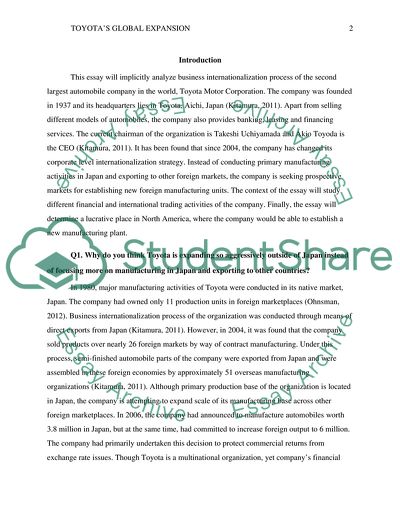Cite this document
(Toyotas Global Expansion Essay Example | Topics and Well Written Essays - 3000 words, n.d.)
Toyotas Global Expansion Essay Example | Topics and Well Written Essays - 3000 words. https://studentshare.org/business/1829990-toyotas-global-expansion
Toyotas Global Expansion Essay Example | Topics and Well Written Essays - 3000 words. https://studentshare.org/business/1829990-toyotas-global-expansion
(Toyotas Global Expansion Essay Example | Topics and Well Written Essays - 3000 Words)
Toyotas Global Expansion Essay Example | Topics and Well Written Essays - 3000 Words. https://studentshare.org/business/1829990-toyotas-global-expansion.
Toyotas Global Expansion Essay Example | Topics and Well Written Essays - 3000 Words. https://studentshare.org/business/1829990-toyotas-global-expansion.
“Toyotas Global Expansion Essay Example | Topics and Well Written Essays - 3000 Words”. https://studentshare.org/business/1829990-toyotas-global-expansion.


